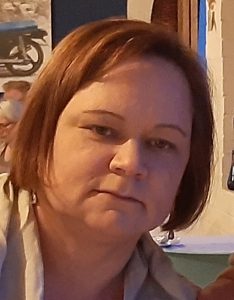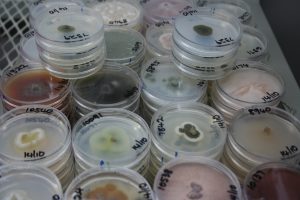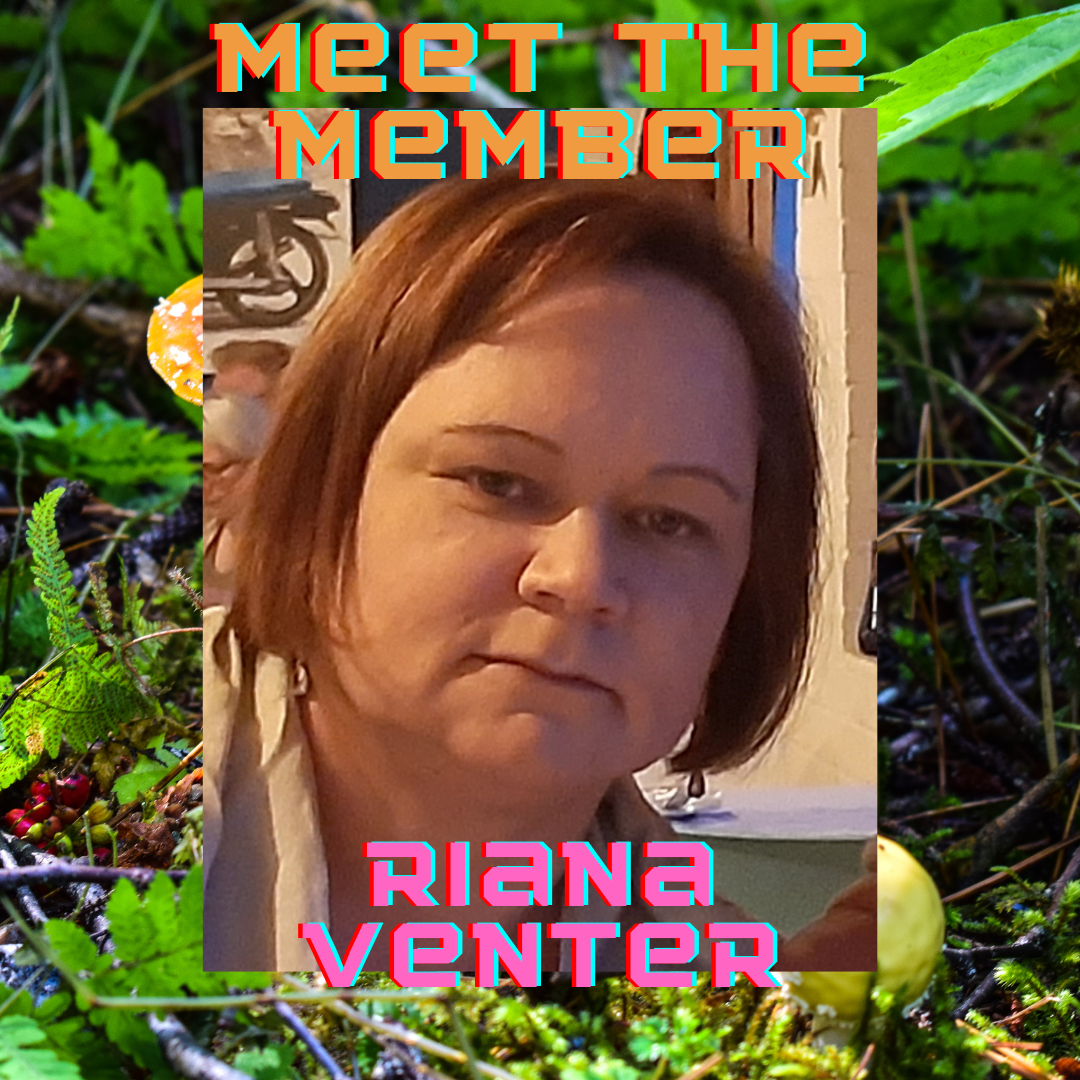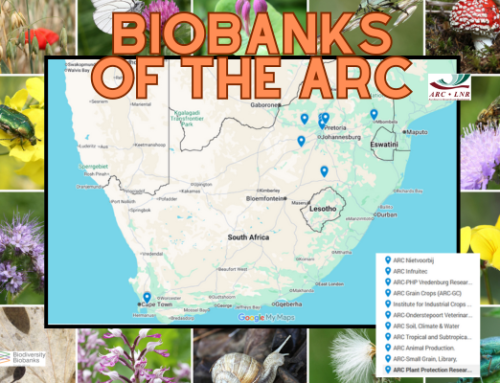Meet The Member: Riana Jacobs Venter – Finding the Fun in Fungi
Fungi aren’t quite as famous as plants or animals. But they’re every bit as important – and every bit as interesting. Just ask Dr Adriaana (Riana) Jacobs, who’s had a passion for exploring fantastic fungi ever since her grandfather gave her her first microscope as a teen.
“Fungi are my favourite living things,” she says. “Why? Because of their beauty and adaptability, and their amazing diversity. There’s just so much we can learn about – and from – them.”
That passion took her from Bloemfontein, Free State, where she grew up and completed her BSc and BSc Hons (Microbiology) at the University of the Free State, to Pretoria to complete her MSc and PhD at the University of Pretoria. And it brought her to the National Collection of Fungi (NSCF), where she leads a team duplicating and incorporating fungal collections from the Agricultural Research Council (ARC).

Dr Adriaana Jacobs, Curator of the National Collection of Fungi and Senior Researcher at the ARC’s Plant Protection Research Institute – and a big fan of fungi.
Under the custodianship of the ARC’s Plant Health and Protection Unit, a core member of the Biodiversity Biobanks South Africa (BBSA), the NCF houses approximately 33 000 specimens of fungi from 159 genera from all over the world (and safeguards an additional 9000 strains from the SAMRC), offers six different diagnostic tests and is supported by six staff members.
Those staff members are kept busy duplicating and incorporating all fungal collections across the 11 campuses of the ARC, generating DNA barcodes for some of these strains, and studying the phylogenetic relatedness amongst them…among other things.

The ARC National Collection of Fungi biobank houses over 33 000 specimens of fungi from 159 genera from all over South Africa (and beyond).
But like the fungi they study, the NCF doesn’t always get the attention it deserves.
“The hardest thing for our biobank is to illustrate impact and relevance,” Dr Venter says. “That’s one area where the BBSA can really help. By introducing the owners – the taxpayers – to the biobank, and exploring its impact in the country and region on food security and biosecurity.”
Point taken. So we caught up with Riana to find out more about how she puts the “fun” in “fungi”…
What are you working on at the moment?
I am currently involved in a number of soilborne fungi based projects with collaborators at University of Cape Town, University of Limpopo and the University of Johannesburg as well collaborators in the USA, Australia and Poland. These projects all aim to explore the role of fungi within soil ecosystems. In the National Collection of Fungi (NCF), we are busy duplicating and incorporating all fungal collections across the campuses of the ARC. We are also generating DNA barcodes for some of these strains and study the phylogenetic relatedness amongst them. New species are identified and described in collaboration with the depositors.
Daily activities include student supervision and staff meetings, alongside with the NCF team I have regular client interactions regarding legal logistics of projects/activities, ongoing stakeholder engagements and daily administration.
What do you love most about your job?
Contributing to a sector that impacts so many people’s lives directly or indirectly. Food security, conservation, medicines, biotechnology – all these depend on an understanding of our biodiversity. And I also just love working with fungi, of course!
What do you do to relax? Or when you’re not working?
I like to read (history of science), painting and gardening. And I love doing things with my family, especially on the weekend: a rugby game (my son plays); a music competition (my daughter plays three instruments); or a braai.
What are your hopes for the BBSA?
The BBSA provides a platform where a community of practice can exchange ideas, methodologies and challenges. It helps in building a network of colleagues you can ask for advice. I think there’s room to grow there, though – by being transparent about our challenges, we can become an integrated community of practice that illustrates the importance and relevance of preservation/long term storage of all biodiversity.
What’s one thing people would be surprised to know about you?
That I can’t cook. At all.
If you could give your teenage self one bit of advice, what would it be?
Don’t let anyone tell you you can’t. Make a difference in the world every day, no matter how small. And keep going – the journey is awesome!
Want to know more about the National Collection of Fungi, and the other ARC biobanks? Just watch this. Or do you want to know about the NCF’s Invasive Fungal Hub? We’ve got you covered. And while you’re at it, why not learn more about what biobanks are (and aren’t) all about?

What are biodiversity biobanks?
Biodiversity biobanks are repositories of biologically relevant resources, including reproductive tissues such as seeds, eggs and sperm, other tissues including blood, DNA extracts, microbial cultures (active and dormant), and environmental samples containing biological communities….






